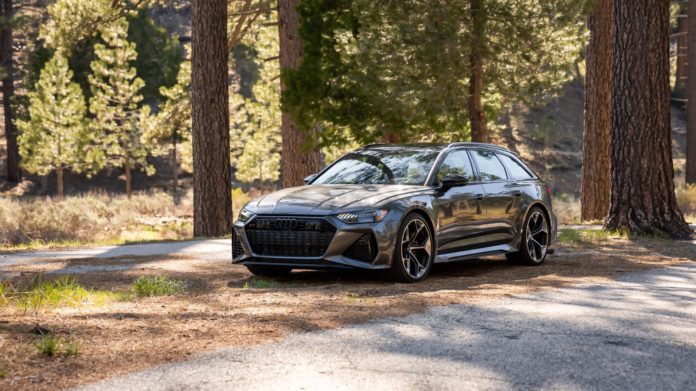With production of the R8 ending earlier this year, the RS6 Avant and its mechanical sibling, the RS7, have become Audi’s de facto halo cars—at least for now. Introduced in 2020, this twin-turbo V8-powered station wagon isn’t quite yet due for a proper refresh. Still, that hasn’t stopped the German automaker from updating its long-roofed halo by introducing the 2024 Audi RS6 Avant Performance.
To be clear, the Performance isn’t a separate trim level or an optional package. Every new RS6 Avant is a Performance model, a slightly confusing moniker considering Audi previously tacked “Competition” onto its RS5, borrowing a page from BMW’s playbook. Regardless, what matters are the updates the latest RS6 receives, which include a 30-horsepower bump up to 621 hp, an optional set of lightweight wheels that cut unsprung mass by 11 pounds per corner, and reduced sound deadening so you can actually hear its burbly V8.
As you’d expect from a mild update, the Performance’s new extras don’t transform the driving experience. Still, given that the RS6 Avant already laid such a strong foundation, you’ll soon learn that instead, they take something great and make it even better.
For the 2024 model year, the Audi RS6 Avant Performance adds standard matte gray finished trim to its front spoiler, rear diffuser, side blades, and mirror caps. However, my tester swaps it out for gloss black pieces courtesy of its $3,750 black optic package. This optional extra coats its 22-inch lightweight forged wheels in a two-tone finish while wrapping them in Continental SportContact 7 rubber. Combined with the new 30-hp output increase, these Y-spoke wheels, which reduce unsprung weight by 44 lb, allow the Performance to cut its predecessor’s 0-60 time by two tenths, completing the run in 3.3 seconds.
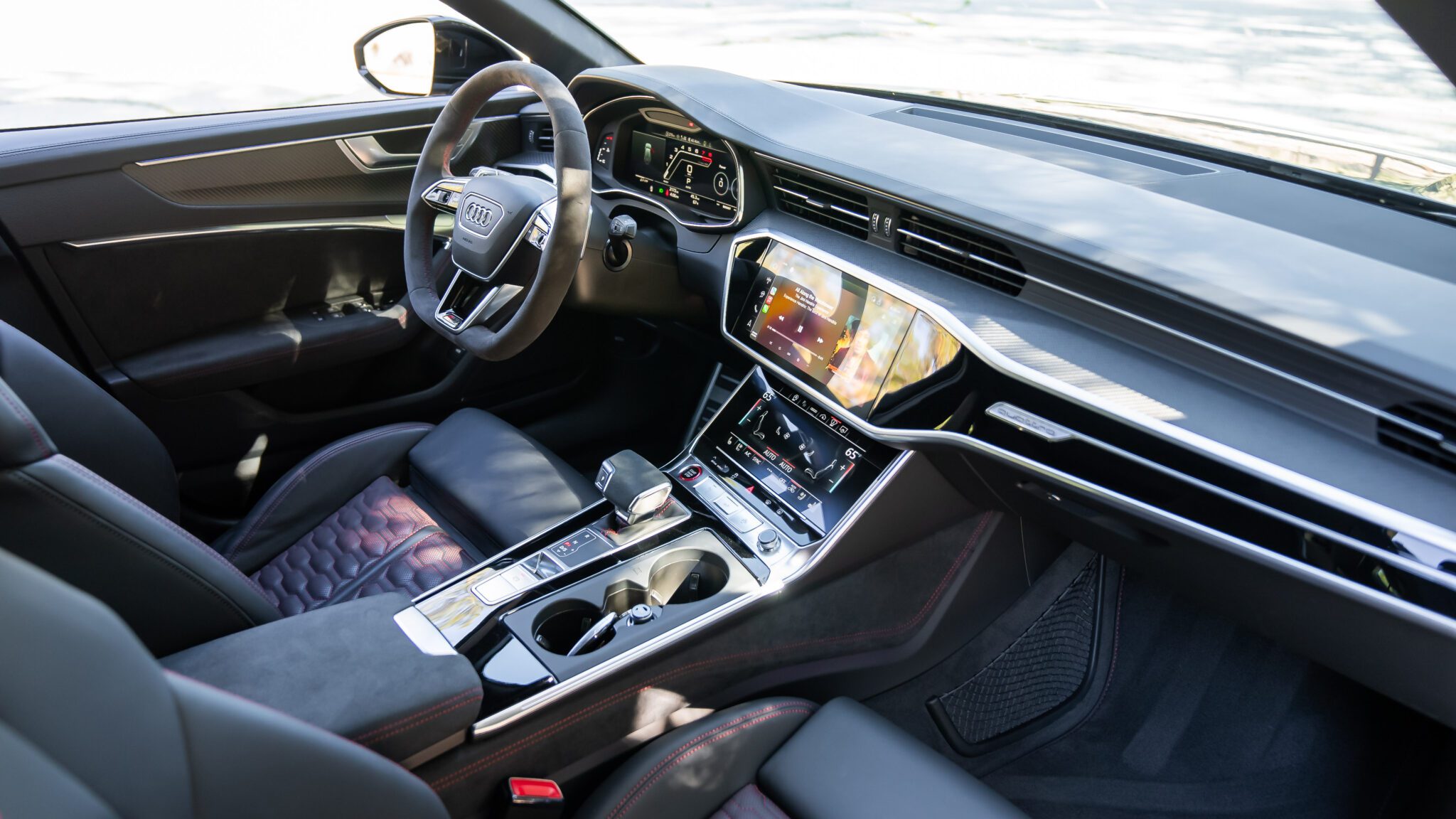
Although my tester is primed to fly under the radar with its Daytona Gray paint and equally subtle black leather interior, the RS6 is now available in two vibrant Grenadier Red and Ascari Blue hues. Two shades that match perfectly with its optional RS design package, which adds blue, red, or gray contrast stitching to the cabin. However, they’re only available with a black leather base. The package covers its flat-bottomed steering wheel in Alcantara, while its gear selector and door cards get a Dinamica microfiber treatment.
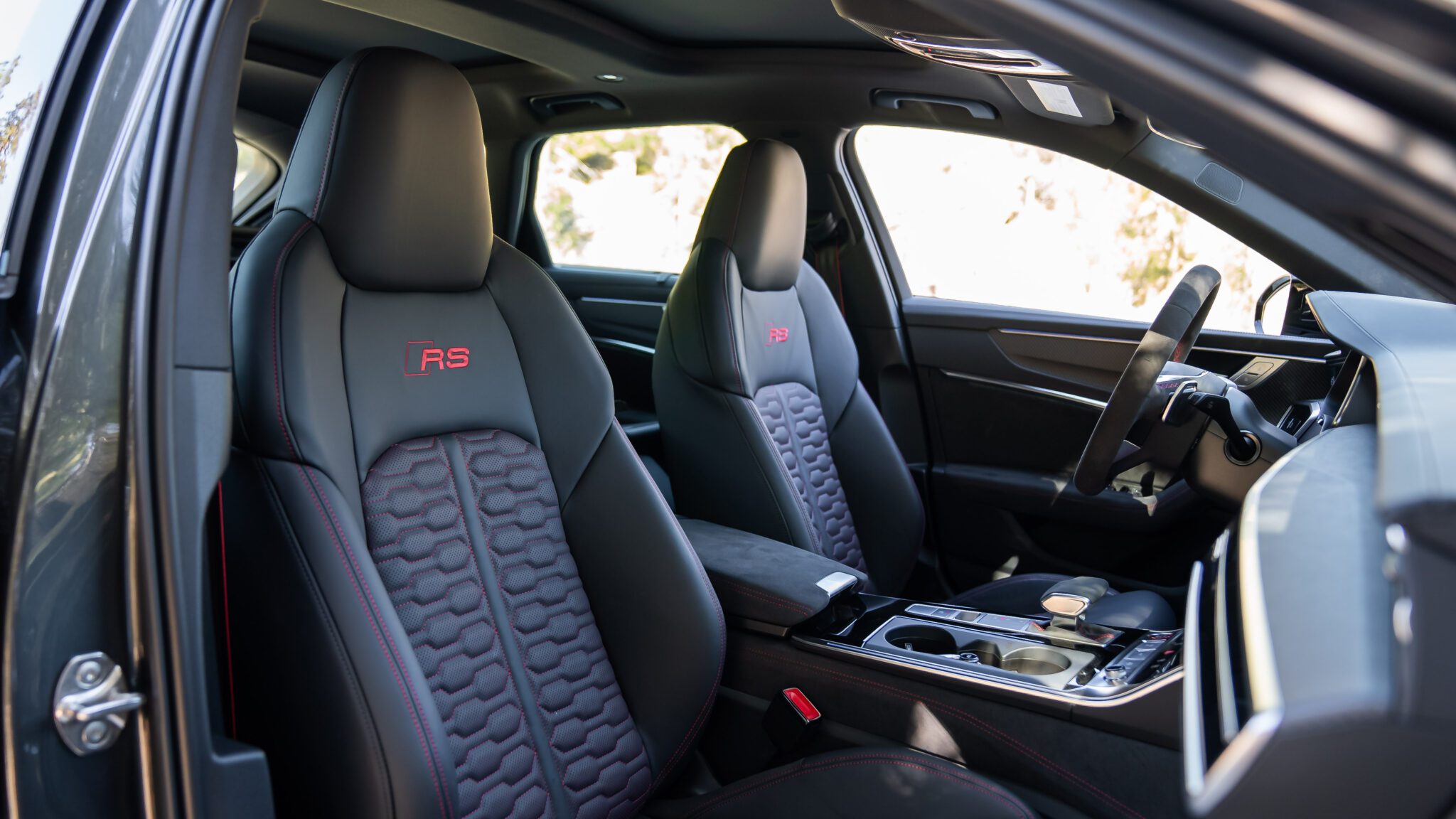
Unlike the RS5 Competition, which received new coil-over suspension alongside its lightweight wheels and reduced sound deadening, thus significantly sharpening its handling, the RS6 Performance’s improvements are far subtler. Although the RS5 arguably needed the help to become the best version of itself, the wagon’s updates aren’t as transformative. This is mainly due to the outgoing RS6 already being an excellent performance car to start with.
A two-tenths quicker 0-60 time may lead to enhanced on-paper stats, but given that we’re talking about the car that completes the run in around three seconds, that improvement is hardly felt behind the wheel. In other words, it’s rapid, but so was its predecessor. What is noticeable, however, is the updated tuning to its eight-speed automatic transmission, which rips shifts even quicker than before, making full use of the available power and the abundance of traction courtesy of its Quattro all-wheel-drive system.

While its 4.0-liter twin-turbocharged V8 generates more power thanks to a set of upsized turbos, now up to 621 hp and 627 lb-ft, it does so just like its predecessor. That is to say, you get a split second of turbo lag, followed by a massive wave of torque down in the rev range, which then builds to redline. The key to the Audi RS6 Avant Performance feeling supercar quick, however, is the abundance of midrange power, meaning that once you’re halfway up the rev range, the response you get from its V8 is swift. It’s not naturally-aspirated V8 swift but about as quick as a heavily turbocharged powerplant can be.
Dive into a corner, and the RS6’s front end feels slightly lighter on its feet, thanks primarily to its reduced unsprung mass. While there’s no hiding this car’s nearly 5,000 curb weight, the Performance adds a new level of agility to a car that previously generated excellent grip levels but wasn’t overly eager to change direction. Its steering, however, remains frustratingly muted, delivering little feedback. While a lighter and smaller central locking differential aims to dial out understeer, you’ll still get a smidge of push from the front end as you pick up the pace.
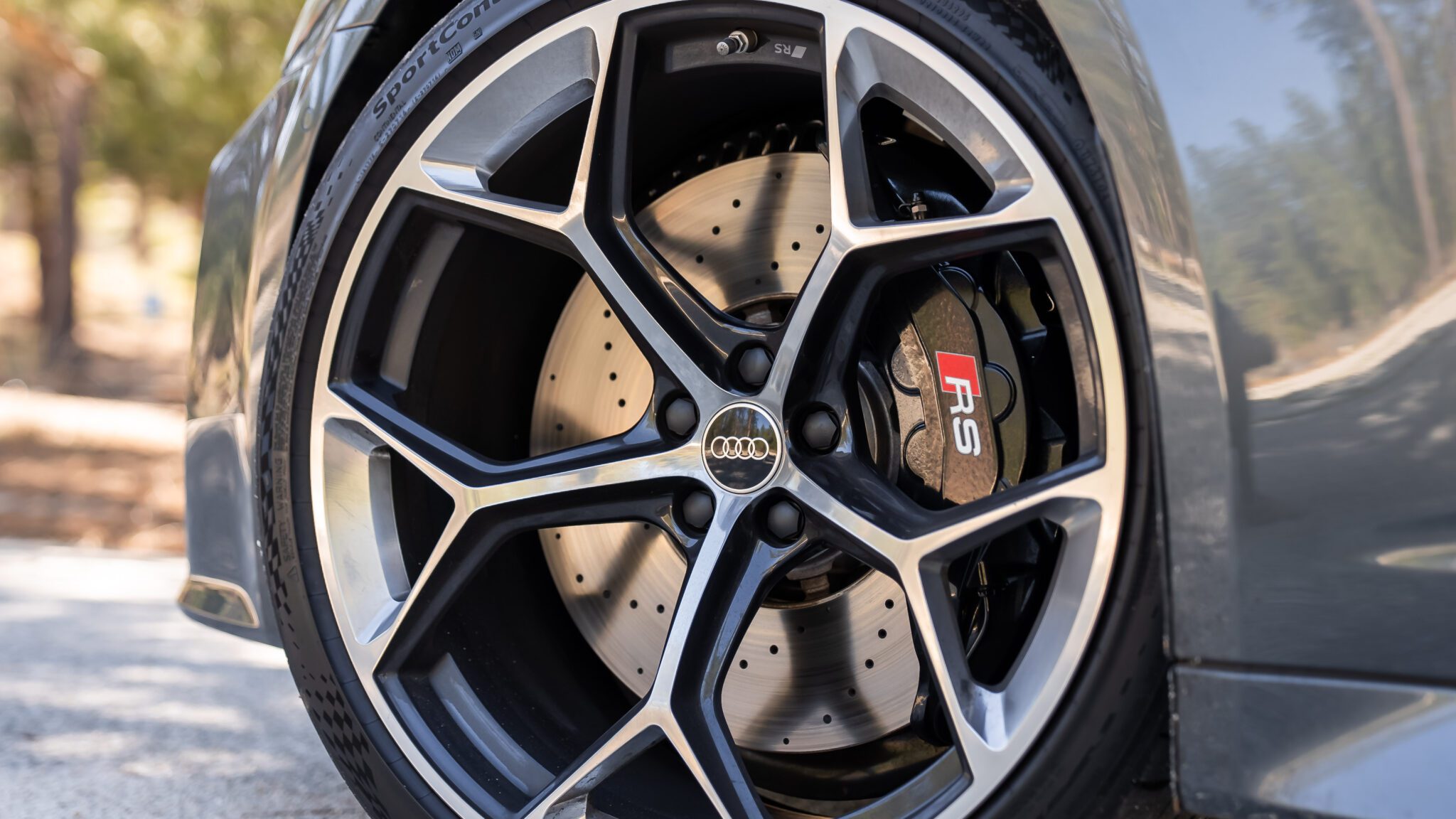
Alongside its reduced sound deadening, my tester pairs a $1,000 RS sport exhaust system. This is an optional extra that should be mandatory because while the Performance allows more natural sound to permeate through the cabin, although it still pipes in plenty through its speakers, it still doesn’t offer a genuinely sonorous experience with booming bassy V8 notes. This is due mainly to the tremendous amount of sound deadening present in the first place, proof that making anything sporty out of a luxury car is still quite a challenge.
That said, it’s worth remembering the RS6’s dual role of not just being a backroad thriller but a properly practical daily as well. To this end, it’s understandable why Audi didn’t turn up the volume and, crucially, why it left its suspension untouched. The carmaker could’ve firmed it up further to create a more athletic machine. While this means that the RS6 isn’t relatively as quick or hardcore as it could be, it allows it to retain excellent comfort levels, even with its large wheels, once you dial down its adaptive shocks. The result is an ultra-powerful wagon that’s equally at home sitting at triple-digit speeds on the left lane or chasing supercars up a winding mountain road.
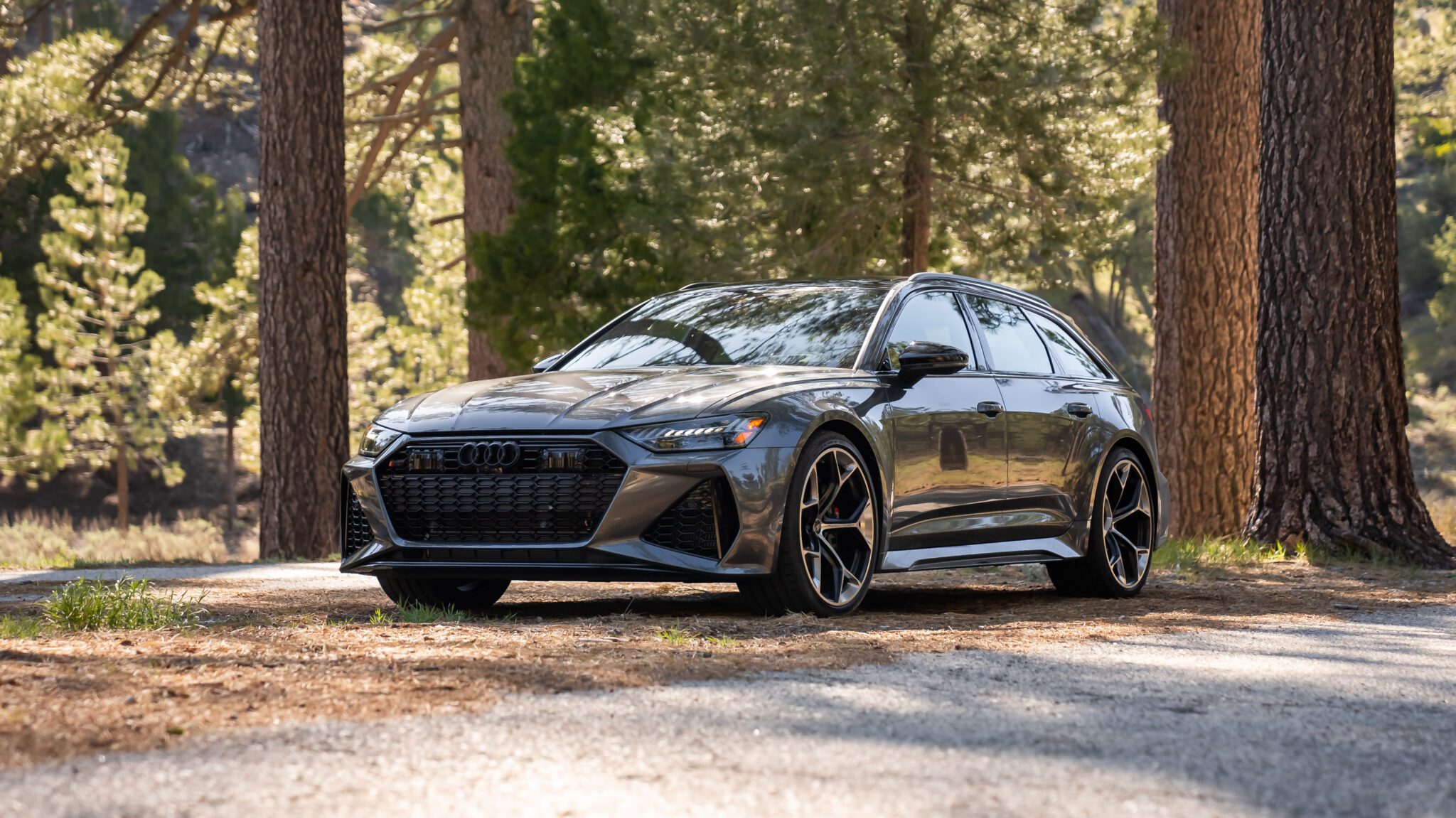
For 2024, The Audi RS6 Avant Performance starts at $128,195, including a $1,095 destination fee and a $1,300 gas guzzler tax. Options such as the $3,750 black optic package, $3,000 RS design package plus, and $2,750 executive package bring my tester’s price up to $144,040. That’s about what an equally optioned RS Q8 costs, the closest comparable vehicle, given that the new Mercedes AMG E63 and the BMW M5 have yet to be unveiled. Throw in Porsche’s axing of the Panamera Sport Turismo, and the RS6 is in a class of its own.
While the Performance treatment may not transform the RS6’s driving experience, it doesn’t need to. Given that Audi’s halo wagon started from a position of strength, it’s only been improved. Thanks to its extra power output, sharpened transmission tuning and reduced unsprung weight, it’s an even sharper tool for tackling your favorite road. Crucially, however, these updates don’t detract from this car’s daily usability, which is central to its appeal. In short, the Performance takes a great car and makes it even better.

